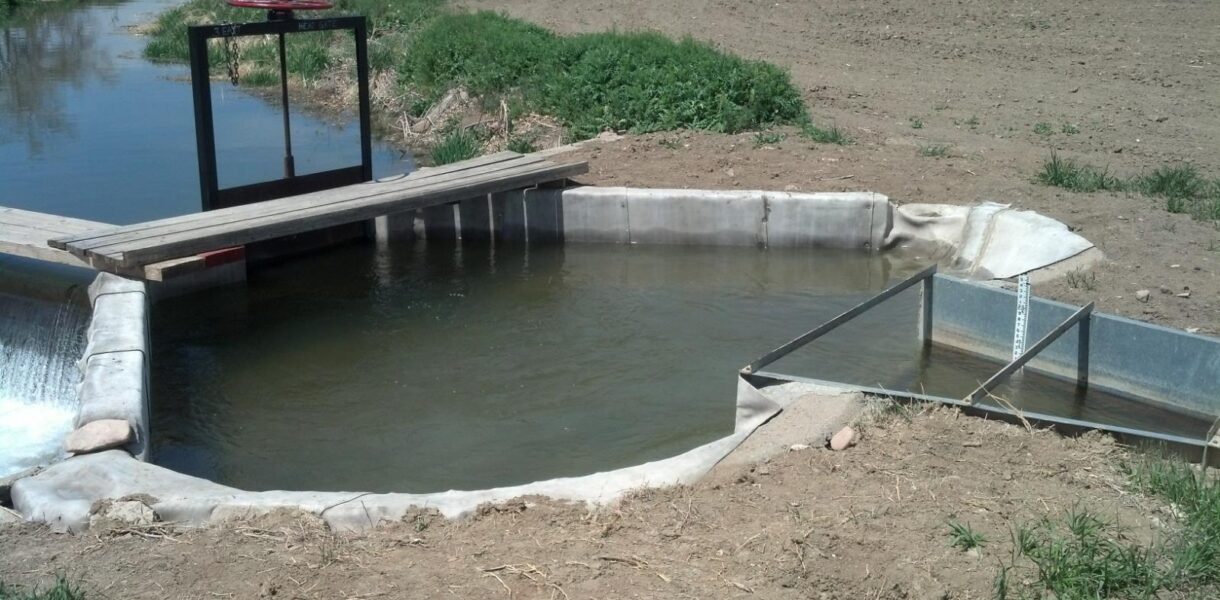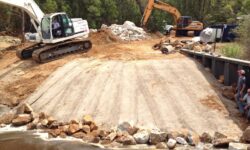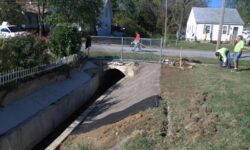Project Overview
The North Poudre Irrigation Company has installed and maintained irrigation water collection and distribution structures such as the one pictured to the right for nearly 100 years. These structures are quite common in the west, and serve to collect irrigation water inflows, then redirect them into local irrigation ditches for distribution. Frequently, weirs are also a part of, or are installed very near these distribution structures and water volumes are measured and recorded.
The company estimates they have as many as 200 such structures in their network, and many are in need of repair. The aged concrete has cracked and is leaking, and in many cases the cost of replacement is quite high. As a result, the company is interested in a more cost effective means to repair the structures.
Solution
Combat Concrete (CC) GCCM was chosen because of its unique attributes, including the ability to custom shape the material to the configuration of each individual basin, which were all hand crafted originally. Also the product is easy to install, allowing the company to use its own labor rather than an external contractor. The portability of CC GCCM was an advantage as many of these structures are not easily accessible. Finally, the product is fire resistant, which allows debris to be burned in these channels in the spring.
Day 1: First step was to clean the area of debris. Then the layout was determined, based on geometry and dimensions of the basin. In this case, the irregular shape led to a design where the bottom would be lined first, then separate panels would be installed on the walls of the structure. CC GCCM was cut to fit the bottom, laid in place and fastened. The panels on the walls were glued and fastened using a nail gun. The entrance opening was then affixed using a hold down bar fastened into the walls of the opening. CC GCCM was screwed together at many overlaps. Finally, the completed installation was hydrated using a water truck and water hose. Watering was completed late the same day.
Day 2: The site was revisited for inspection of the final product.




